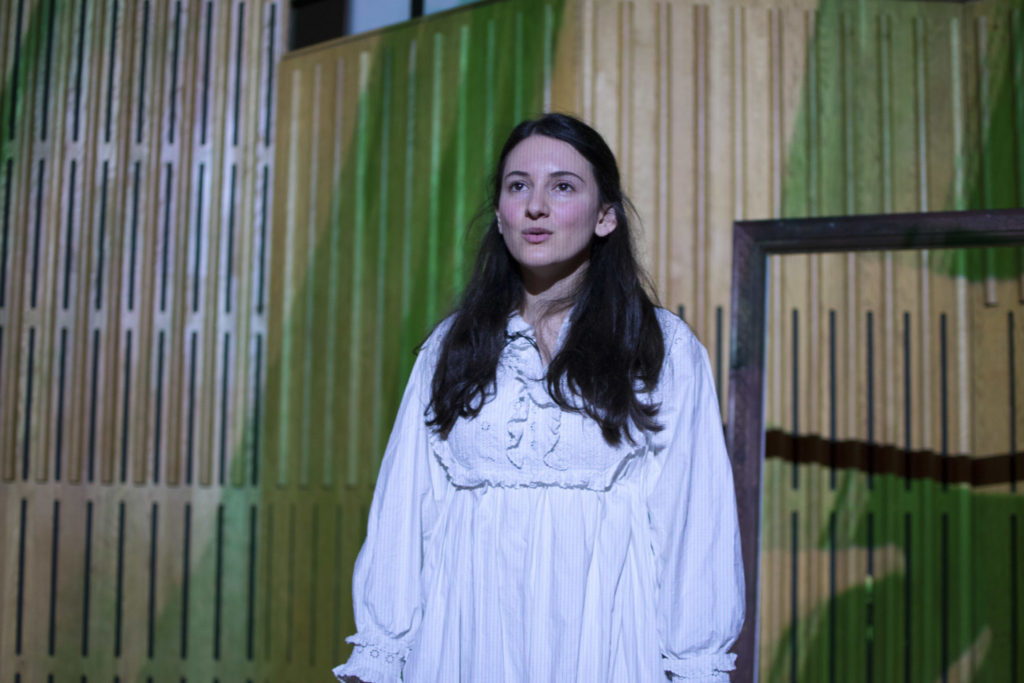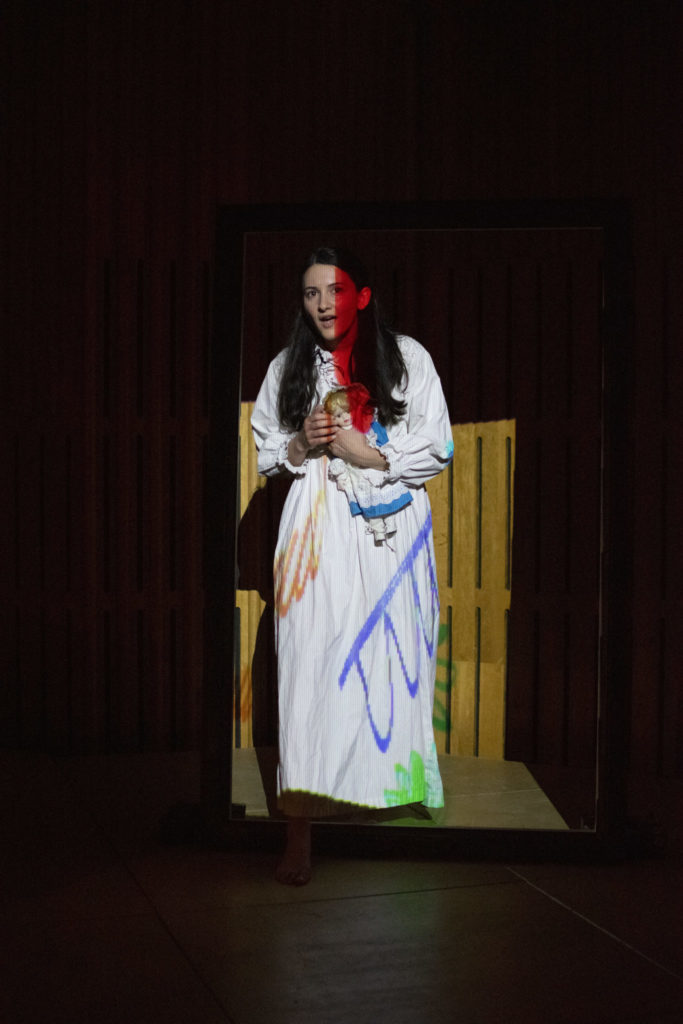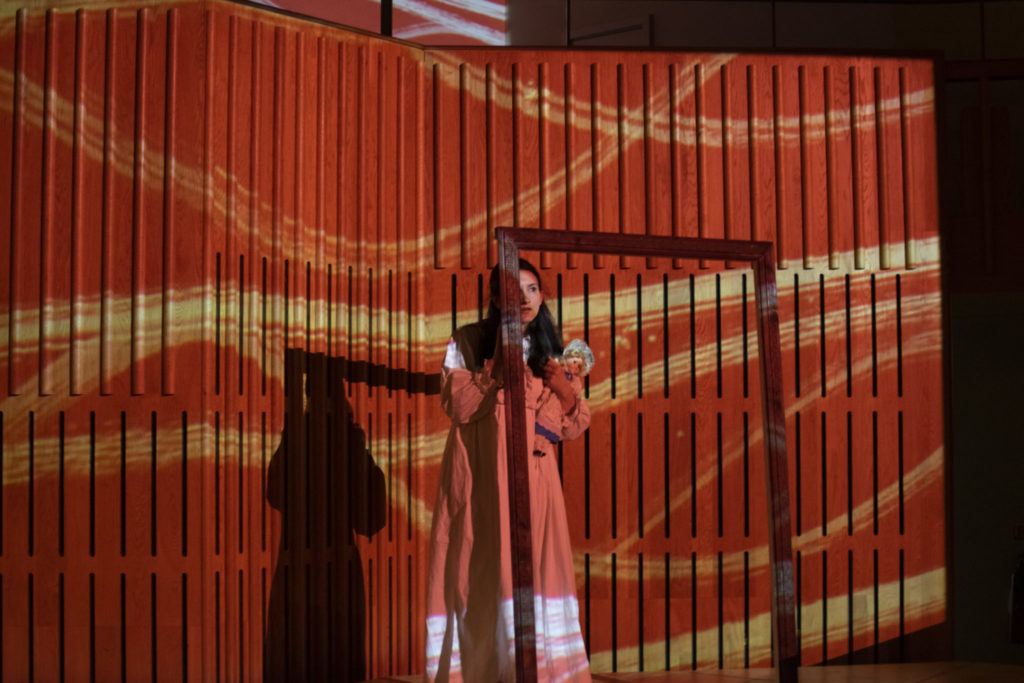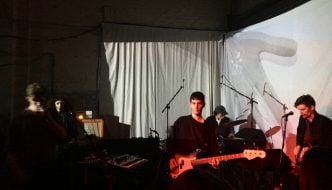
Nishla Smith’s haunting vocals, evocative textural animations by Luca Shaw and a compelling piano score by Tom Harris are woven together to create ‘What Happened to Agnes’, Nishla Smith’s staged song cycle of the disappearance of her great aunt in Malaysia in the 1930s.
Australian born, Manchester based jazz singer, Smith, takes us through her venture into new musical territory and talks about her aspiration to become a cross-disciplinary artist.
What Happened to Agnes is a sound and visual study in memory, forgetting, imagination and reality. It’s the result of an idea developed through Resonance, a residency programme for BAME artists with Opera North Projects and Leeds Playhouse. I asked Smith how it came about. “I had done a project before with the Manchester Collective bringing together songs as a narrative story, and I knew that I wanted to do something like that but push it further. A real narrative experience, but I really wasn’t sure what shape that would take. Once I was offered the residency and started thinking about it, I realised that I wanted to do something with my grandmother’s story which has obsessed me for a long time.”
Smith’s grandmother’s life is fertile ground to mine for inspiration: Ulita grew up in Malaysia in the 1930s, three of her siblings died in childhood, including her sister Agnes, whose death she couldn’t remember. The family survived the Japanese invasion of Malaysia during the second world war but were separated; Ulita’s father was imprisoned and the children placed in a convent. Every Sunday, Ulita was made to sing the Japanese national anthem on the radio, her singing voice exploited by the Japanese army to taunt ally fighters, some of whom were her uncles. After the war, Ulita studied in the UK to become a doctor and returned to Malaysia to help children survive childhood illness. During the race riots in 1969, the family moved to Australia where Ulita worked with indigenous communities in Tennant Creek.
Yet, it wasn’t Ulita’s life which formed the basis of the project, but a moment in the early part of her story when her sister, Agnes, disappeared when Ulita was four and Agnes was nine. Smith had made hours of recordings of conversations with her grandmother and became fascinated by how she talked about her sister’s death. Phrases like, “There was no more Agnes” and “She went away somewhere” invoked an incident shrouded in mystery that became the starting point for ‘What Happened to Agnes’.

The performance could easily have become a dark exploration of the human psyche and memory. Instead, Smith has used recorded conversations of her grandmother’s sometimes surreal memories of her childhood to create a visually rich soundscape of memory and imagination where what happened to Agnes is revealed.
Artist Luca Shaw is responsible for the visual elements of the performance. Shaw’s abstract, colourful animations perfectly evoke a magic-realist imagined world. Smith talks about their collaboration: “The process started with Luca pretty early on. Because the animation process is so slow we had to get a lot of stuff together before we were in the rehearsal room. We would meet up every couple of weeks as my ideas were developing, and I would say to her that there’s going to be this scene and it’s going to feel like this, and she would come up with some visual ideas and we would work back and forth. We always knew that we would have this childlike feeling. Luca likes to create ideas from suggestions of things rather than be too explicit, so that worked really well with what we were trying to create.”
While a song cycle is a naturally classical genre, Smith stays close to her jazz roots, including some classical elements though her collaboration with pianist Tom Harris. She explains: “the music is definitely informed by a jazz aesthetic, harmony-wise and with some of the textures. It’s very fluid. It’s not ever the same two nights in a row. When I started working together with Tom, I had the harmony outlines but there’s no notes on the page and in the Resonance residency we explored a lot of ideas together and created characters for the different people who appear in the story in piano motifs and things. It kind of captures some of what we do when we’re just playing jazz. It also has classical moments. In one of the songs, you’ve got a kind of baroque feel and repeated piano motifs and underneath, this narrative develops, so it’s got lots of different musical influences.”
While the song cycle focuses on Agnes, Ulita has been an important presence throughout the process. She has heard all the music and read the script and moments of the recorded conversations are played at the opening of the performance.
Smith talks about the effect of the project on her grandmother: “Talking about Agnes has brought up a lot of memories and questions. We have since found out what happened, and my grandmother has since recovered some memories, but because of the way her family created a silence around the subject of Agnes, this strange, sad mystery has haunted her all her life.”

Now that ‘Agnes’ is up and running, Smith has turned to her next project with Shaw and Harris. They’ve pitched an idea to the Mercury Music Theatre Network which has been given the go ahead and will be performed at the Beam 2020 Showcase. They’ve named their newly formed collective ‘Ulita’, after Smith’s grandmother.
Meanwhile, Nishla Smith is one of Jazz North’s Northern Line artists, and in addition to touring, she’ll be recording an album with her quintet. Running two careers in parallel doesn’t faze her: “I would love to be able to create a portfolio career where I was doing the jazz that I absolutely love and find rewarding, and then also getting this creative writing side of it, making cross-disciplinary work that I’m so excited about and maybe not performing it as much.”
What Happened to Agnes has already played in Manchester and London and will run until March playing Liverpool (Kazimier Stockroom, 12th February), Sheffield, Birmingham and Leeds. You can find tour dates for both ‘What Happpened to Agnes’ and Smith’s quintet on her website https://www.nishlasmith.com/
Filed under: Music
Tagged with: agnes, art, cross-disciplinary, family, grandmother, Japan, jazz, luca shaw, malaysia, memory, music, mystery, nishla smith, performance, remembering, trauma, ulita, writing



Comments